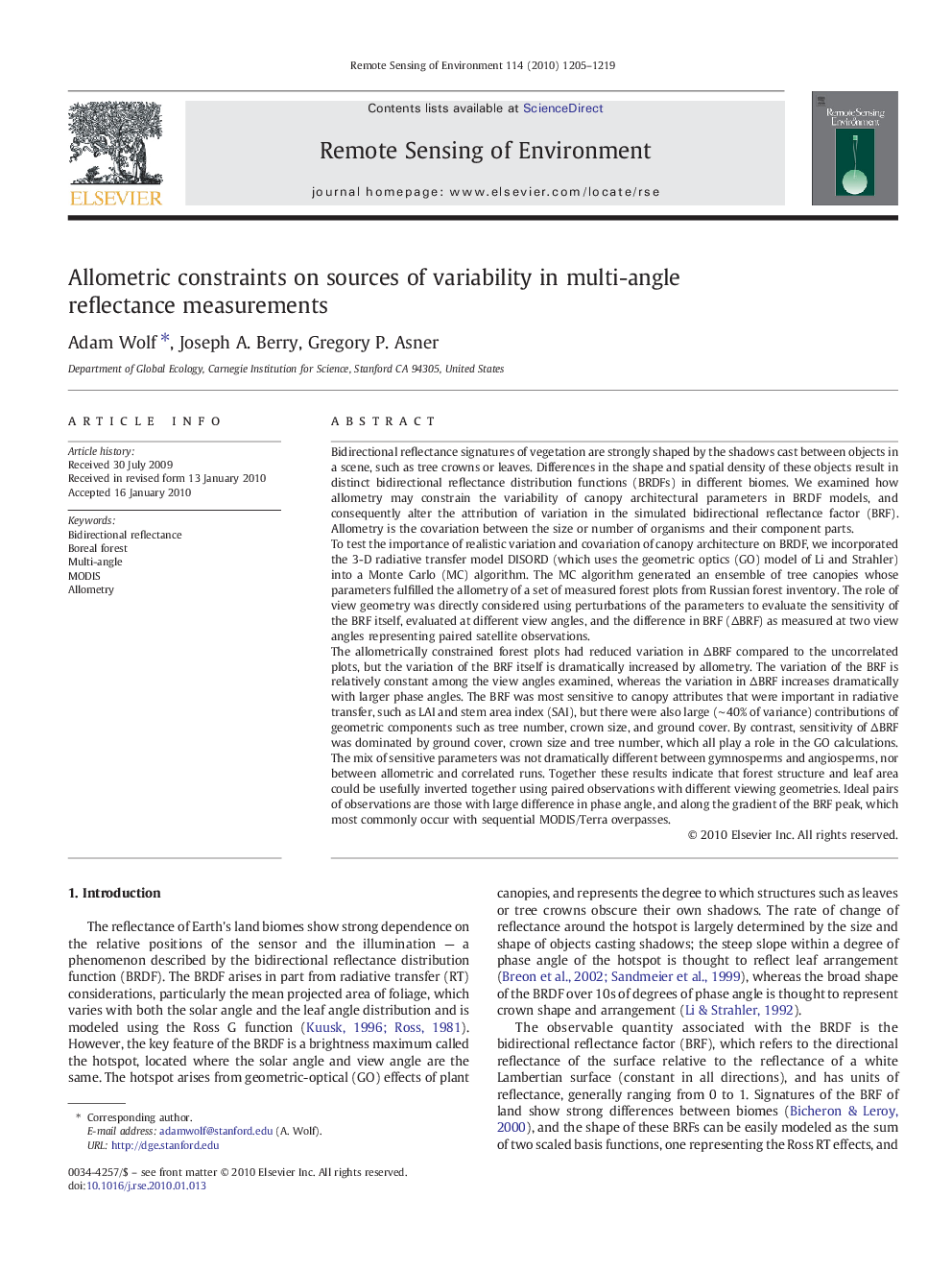| کد مقاله | کد نشریه | سال انتشار | مقاله انگلیسی | نسخه تمام متن |
|---|---|---|---|---|
| 4459756 | 1621303 | 2010 | 15 صفحه PDF | دانلود رایگان |

Bidirectional reflectance signatures of vegetation are strongly shaped by the shadows cast between objects in a scene, such as tree crowns or leaves. Differences in the shape and spatial density of these objects result in distinct bidirectional reflectance distribution functions (BRDFs) in different biomes. We examined how allometry may constrain the variability of canopy architectural parameters in BRDF models, and consequently alter the attribution of variation in the simulated bidirectional reflectance factor (BRF). Allometry is the covariation between the size or number of organisms and their component parts.To test the importance of realistic variation and covariation of canopy architecture on BRDF, we incorporated the 3-D radiative transfer model DISORD (which uses the geometric optics (GO) model of Li and Strahler) into a Monte Carlo (MC) algorithm. The MC algorithm generated an ensemble of tree canopies whose parameters fulfilled the allometry of a set of measured forest plots from Russian forest inventory. The role of view geometry was directly considered using perturbations of the parameters to evaluate the sensitivity of the BRF itself, evaluated at different view angles, and the difference in BRF (ΔBRF) as measured at two view angles representing paired satellite observations.The allometrically constrained forest plots had reduced variation in ΔBRF compared to the uncorrelated plots, but the variation of the BRF itself is dramatically increased by allometry. The variation of the BRF is relatively constant among the view angles examined, whereas the variation in ΔBRF increases dramatically with larger phase angles. The BRF was most sensitive to canopy attributes that were important in radiative transfer, such as LAI and stem area index (SAI), but there were also large (∼ 40% of variance) contributions of geometric components such as tree number, crown size, and ground cover. By contrast, sensitivity of ΔBRF was dominated by ground cover, crown size and tree number, which all play a role in the GO calculations. The mix of sensitive parameters was not dramatically different between gymnosperms and angiosperms, nor between allometric and correlated runs. Together these results indicate that forest structure and leaf area could be usefully inverted together using paired observations with different viewing geometries. Ideal pairs of observations are those with large difference in phase angle, and along the gradient of the BRF peak, which most commonly occur with sequential MODIS/Terra overpasses.
Journal: Remote Sensing of Environment - Volume 114, Issue 6, 15 June 2010, Pages 1205–1219